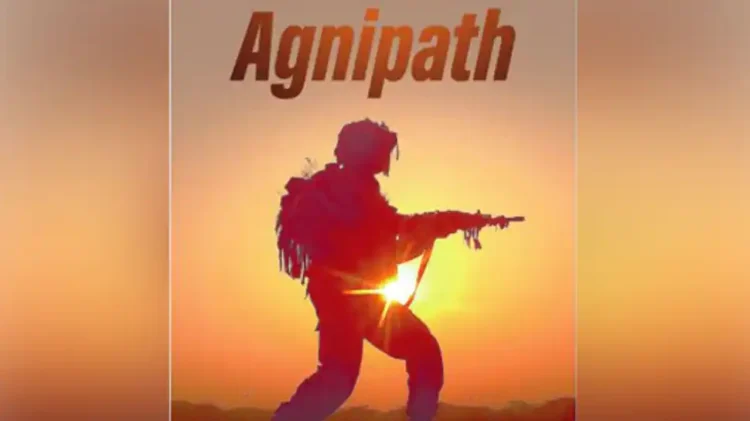New Delhi: Those in the know of things admit a scheme like Agnipath was being worked out for quite some time now. By the first week of June some retired army bosses got an inkling about the same. On paper it was called the Tour of Duty. Under this scheme, soldiers have to serve for four years and about 30-50 percent of them have to re-enrolled for another 15 years. This is a ‘military reform’ as articulated in his tweet by External Affairs Minister Dr S Jaishankar, also a good observer of strategic affairs.
But the protest triggered off again shows the same plot and game plans of anti-CAA and agri reforms are at play.
“This long-awaited military reform enhances our competitiveness. It provides for wider and inclusive participation in the armed forces,” tweeted Dr Jaishankar.
The grossly undisciplined crowd those who damaged properties and put railway compartments on ablaze are just not fit enough to join defence forces. This also shows that sabotage is the handiwork of hooligans and cannot be aspiring soldiers.
Nevertheless, things move in government at its own pace. The Kargil conflict happened with the Pakistani regular army in 1999, a report was prepared by professionals. Things could not move for ten years because in the words of Dr Manmohan Singh ‘coalition politics’ has its compulsions. As Defence Minister for sometime, Pranab Mukherjee reportedly was taking his steps.
He then moved to the External Affairs Ministry as the Natwar Singh-Volcker episode snowballed, displaying ‘oil corruption’ for the Congress party. In UPA-2, Mukherjee was Finance Minister.
So things started moving after 2014. One line in the K Subramaniam-led Kargil Report has said – “The Army pension bill has risen exponentially since the 1960s” and crucially it was “becoming an increasing burden”.
The Modi government took the plunge and acted on the report from the Department of Military Affairs.
The Kargil report also spoke about issues like “reducing the colour service”.
“The Army must be young and fit at all times,” it said and recommended that “the present practice of having 17 years of colour service (as has been the policy since 1976), it would be advisable to reduce the colour service to a period of seven to ten years and, thereafter, release these officers and men for service in the country’s para-military formations.”
The Committee was composed of K. Subrahmanyam (chairperson), and head of the National Security Council Advisory Board (NSCAB), Lt Gen K. K. Hazari, former Vice Chief of the Army, noted journalist B.G. Verghese and Satish Chandra, secretary of the National Security Council Secretariat.
Verghese was also a member of the National Security Council Advisory Board. Incidentally, as luck would have it Subrahmanyam’s son Dr Jaishankar is the part of the Union Cabinet and country’s External Affairs Minister which has brought in Agnipath.
The committee of such eminent people had also suggested that after the end of the service period, the personnel can be absorbed in regular police forces or in a “National Service Corps (or a National Conservation Corps), as provided for under Article 5 lA(d) of the Constitution, to spearhead a range of land and water conservation and physical and social infrastructure development.”
There was also a suggestion to include them in some ‘eco-development battalions’.
The reasoning was sound and emphatic – “This would reduce the age profile of the army…”, and also important for the exchequer to reduce the “pension costs and other entitlements”.
The panel was absolutely point-blank and could gauge the ‘reactions’ that have surfaced from some misguided youths and immensely motivated anti-Modi brigade today.
The committee had said – it is “aware of the complexities and sensitivities” — but it used a very specific
line of warning too. “Nevertheless, national security dictates certain imperatives which the country may ignore only at its peril”.
A Left supported UPA could ignore these vital works.. Another UPA busy with corruption charges and ensuring a good career graph of Rahul Gandhi too ignored.
But the dispensation led by Narendra Modi has taken a decision virtually holding the bull by its horn.
Some brinkmanship by the detractors is thus possible.
But reforms must go on notwithstanding strikes and hurdles and despite elections.
It’s true, Left-dominant discourse in this country on social, economic and political issues has created a maze of laws and systems which ought to go.
New measures and schemes should replace the outdated ones.
These reforms on the military front, administrative, land, Agri and labour are a must if we need to keep the 21st century ‘New India’ in mind.




















Comments